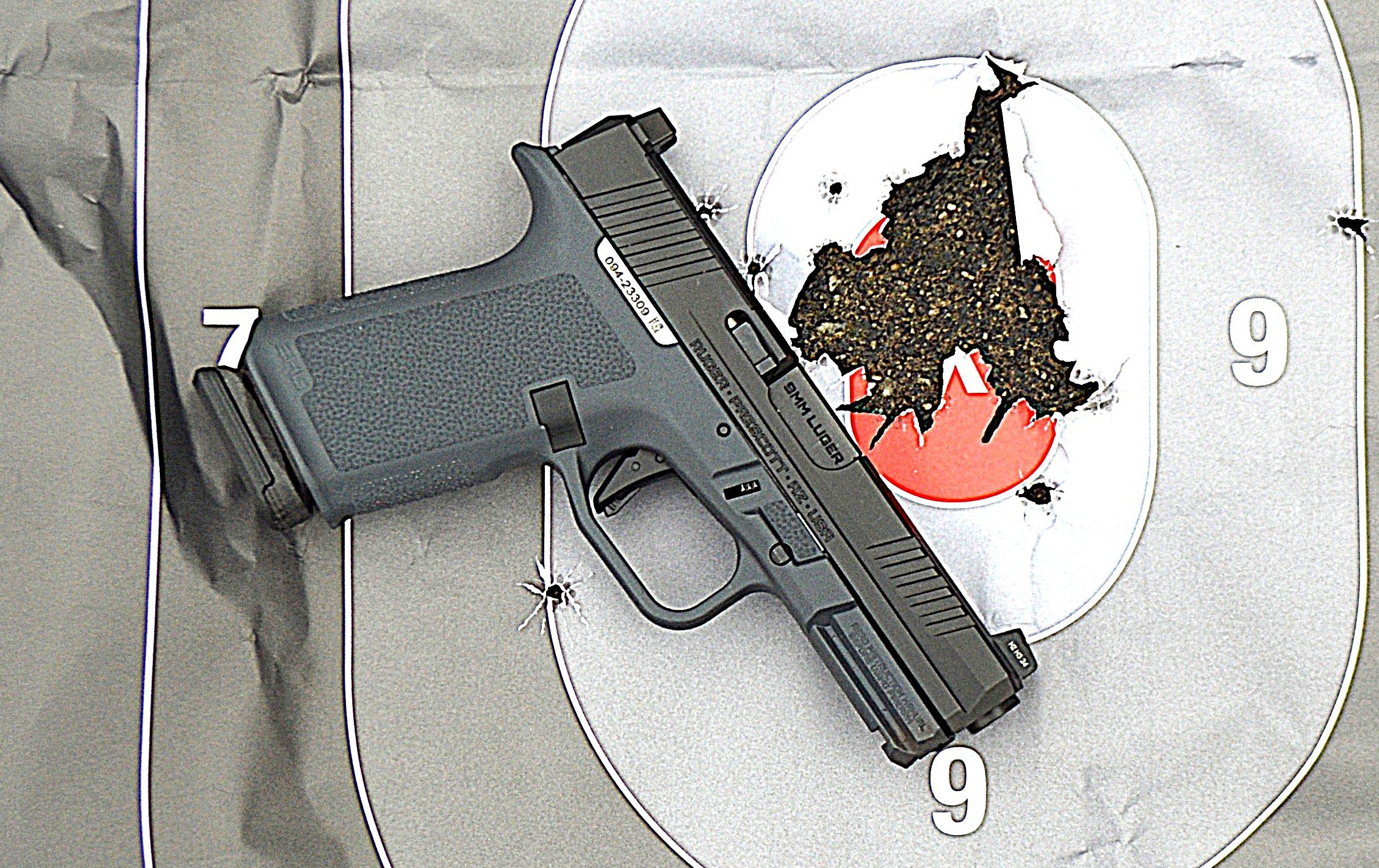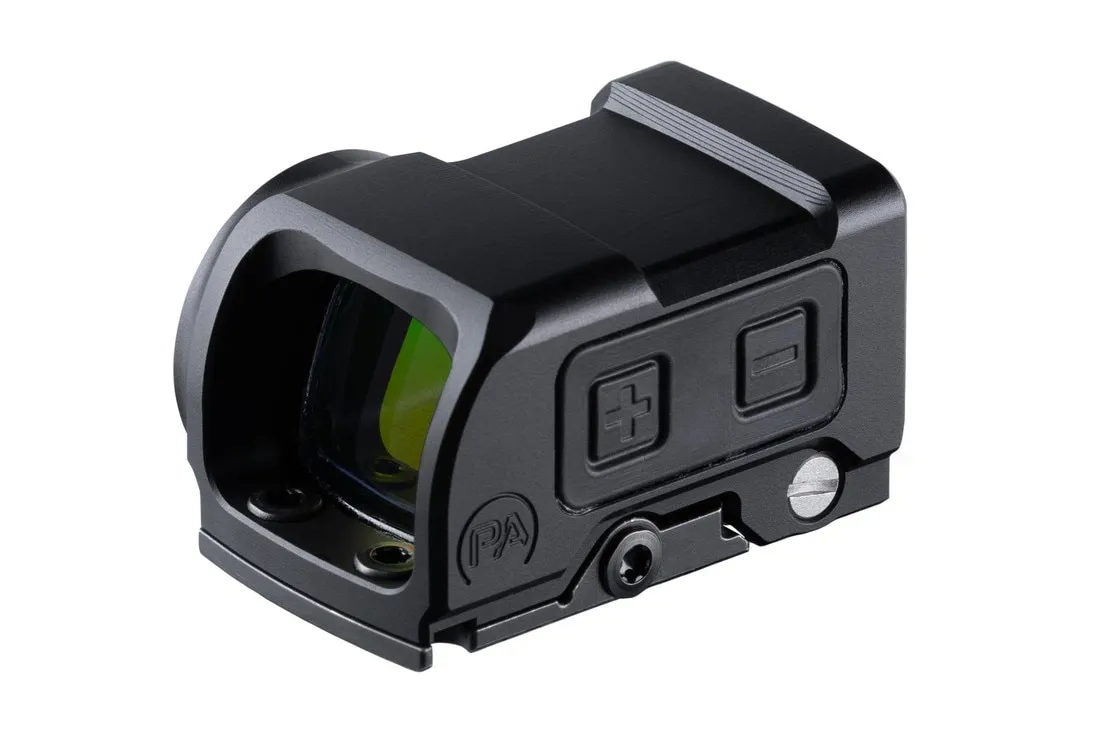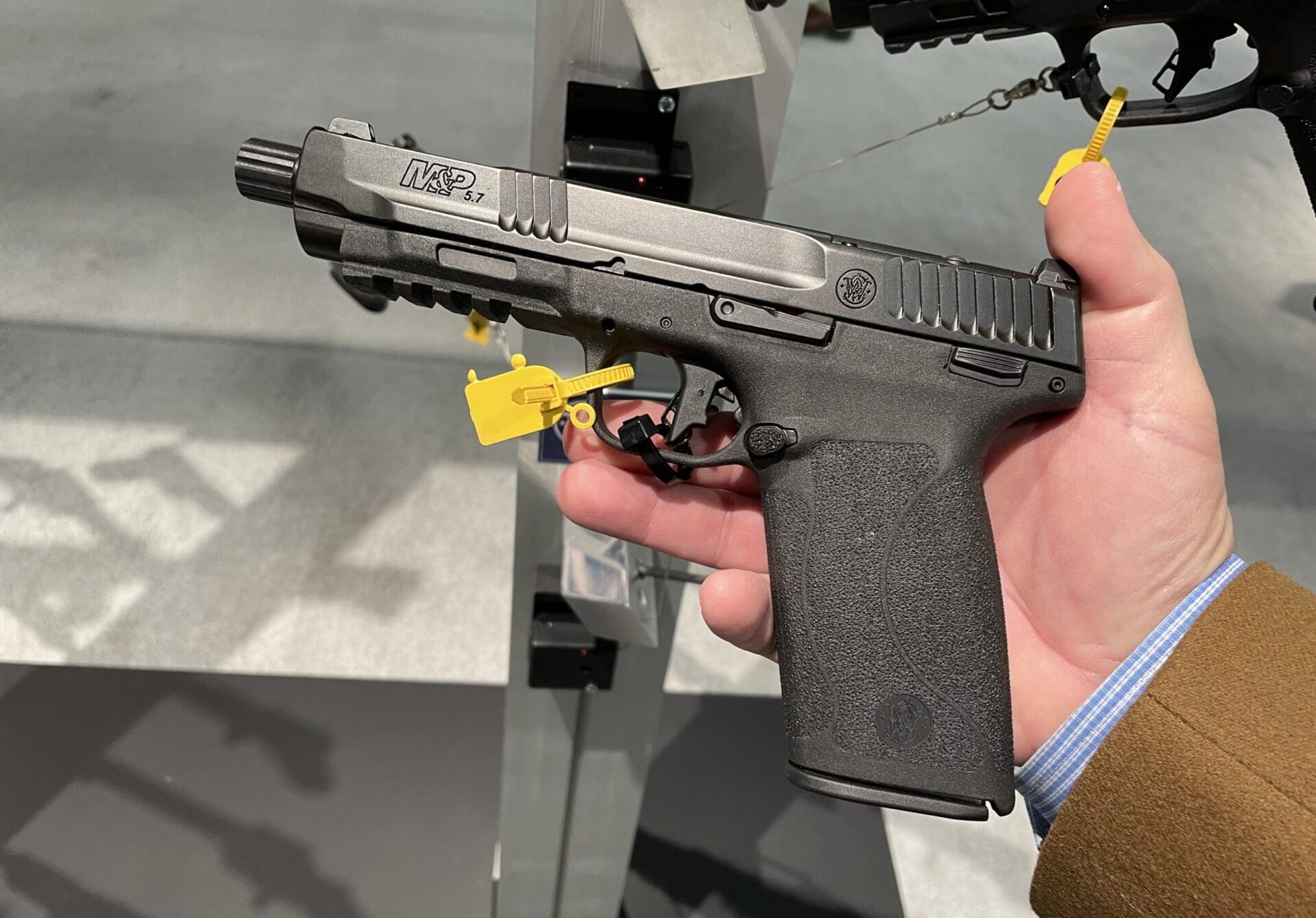
Okay campers, it’s time for the ‘red meat’ portion of the interview. Fasten your seat belts…it’s gonna be a bumpy flight, as we tackle Gabe Suarez, flying with guns, and self-defense products versus the TSA. If you’ve not caught the other parts of the series, do yourself a favor, and start at the beginning. Or if you missed Part II, click here, or Part III, here. And now, back to the questions from TTAG’s Armed Intelligentsia…
Our Editor-in-Chief and Gabe Suarez have had what can charitably be called a “difference of opinion” on the virtues of keeping your finger on the trigger regardless of whether or not you are ready to fire. We did some testing and found that there was only 1/10th of a second difference between having your finger at the ready or on the trigger. Let’s just say that neither RF nor Gabe are backin’ down. Your thoughts?
That goes back to the original research done on that in, oh, I don’t know, I wanna say the early 80’s by Emmanuel Kapelsohn. And it does tend to be right at a tenth of a second difference.
I’ve read that controversial statement from Gabe, and he was basically touching on two things. He was saying, don’t point the gun at the ground in a low ready when you take them at gunpoint, point at the suspect. And his advice was to have your finger on the trigger in that situation.
On half of that, I would agree. I think pointing the gun at the ground is going to much more significantly slow your ability to shoot your opponent if you need to. It’s also a body language message that says, “I don’t dare even point this at you, but could you please believe I might dare to shoot you with it so you’ll surrender.” And I’ve got to go with him. I still recommend that if you’re going to take them at gunpoint, the gun is pointed at the subject. I recommend a pelvic point of aim, so you can watch the hands.
As to finger-on-trigger, I’d have to respectfully disagree with Gabe. And I used to be where he is on that issue, many years ago.
Studies that Kapelsohn and others did, and that we replicated and that you’ve now replicated showed us what they showed you, that a tenth of a second is not going to be the deal-breaker. And over the years I’ve seen so many cases where when the finger was on the trigger, something startled the individual, someone grabbed the individual’s hand, someone grabbed at the gun, and the gun went off.
Well, guess what, you and I know that whoever grabbed the gun caused the discharge. All the rest of the world sees is, you were holding it, it went off, it’s negligence, negligence is the key ingredient, in a manslaughter conviction or a wrongful death finding, and you are screwed.
So what I tell people is, a long time ago I got way from “don’t put your finger on the guard until you’re ready to fire.” I think that’s too nebulous a standard. I think you should be ready to fire when you put the damn thing on in the morning. I tell them, “do not have your finger inside the trigger guard, unless and until you are in the very act of intentionally firing the weapon.” So, one point, I would agree with Gabe Suarez, on the other point I respectfully disagree.
Ammunition. One of our readers would like to get your thoughts on the caliber debate. We had an interesting post on TTAG from someone who works at an ER, and their ancedotal evidence suggests that the 9mm rounds are survivable, whereas the .45 ACP wounds were generally fatal. So what are your thoughts on self-defense and calibers?
You can’t do 9mm versus .45 without looking at what type of ammunition. If you say that the 9mm was, let’s say Winchester 127 grain Ranger T +P+ hollow point, and the .45 230 grain ball, give me the 9mm every day of the week. In deep winter, where even the best designs can occasionally plug when they go through, not just in denim that’s tested for, but things like heavy fibre-fill garments. When the bullet plugs, if it’s going to turn into a ball, I think history shows .45 ball is better than 9mm ball, so if that’s gonna happen I want my ammunition to turn into a BIG ball. In deep cold environments, I prefer the .45.
All things being equal, let’s say that you had a choice between +P rounds in 9mm, .45 ACP, and perhaps .40S&W, which seems to be the “compromise” caliber today, what are your thoughts?
Well, the problem is, all other things never will be equal. I’m talking to you now from my rural property in Florida. Nobody’s wearing anything heavier than a sport coat today. And because of the size of the property and stuff, every now and then we have to kill a critter out here. I like something that has long range and flat trajectory. So I’m carrying a Glock 31 with 16 rounds of 125 grain .357 SIG, with spare magazines, et cetera, et cetera.
In a week I’ll be in a part of the country where I’m legal to carry a gun, but it will not be legal to carry a gun with more than 10 rounds in the magazine. I’ll probably be carrying a 10-shot .45 caliber Glock 30.
At one point next month, I’ve got to go out into the frozen wasteland. I don’t know yet which gun it’s gonna be, but it will probably be a .45 of some flavor. It simply going to depend. I don’t take guns like the .357 SIG and .45 GAP, for long trips, because the ammunition is hard to come by, when I need to replenish and I’m away from my home base. So I’ll carry a common caliber like 9 mil, .40, .45 (.45 ACP).
GAPWhat is the dress code going to be? Do I need a compact gun because I’m going to be wearing a tailored suit every day? Can I wear my usual clothing I normally prefer on my own time? That also will help determine. Am I going to shoot a Glock match while I’m on the road? I’ll carry one or another flavor of a Glock pistol. Am I going to shoot a stock service revolver IDPA match while I’m on the road? I’ll probably carry a .38 special or .357 Magnum six-shot revolver with a 4-inch barrel.
This past summer I was shooting a lot of IDPA in ESR (Enhanced Service Revolver) so the gun I wound up carrying on that trip was a gun that would be kind of large and heavy for most people’s conceal carry applications, a Smith & Wesson model 625 .45 caliber revolver.
Speaking of travel, how difficult have you found it to be to travel with a gun? I presume you have to check the gun in one bag, and the ammo in another.
Well, I’m finding it’s actually been better with the coming of the TSA, because you’ve got universal training standards, and everybody’s on the same wavelength. Prior to that, you had just a mish-mosh of private security at airports. One airport you’d sail through, and another it would be like “Oh my God, a gun…they must be terrorists!”
Shortly after 9-11, it was NOT fun to go up to an airline counter and say “My name is Massad Ayoob and I have two handguns.”
That said, it’s not particularly difficult at all, nothing has changed substantially with it. You want to be careful about going through places where it’s illegal for you to have the gun in your possession the first place. New York City, for example, New Jersey, D.C.. You may win eventually under the McClure/Volkner Act, but by the time you’ve won it will cost you $30,000 in legal fees that you’re not getting back.
What have you found in flying about what you can carry as far as your other equipment? I know you can’t take a tactical folder on board, but say, a flashlight, a tactical pen, or other gear?
I do not carry the self-defense pens per se. I carried the crenelated head SureFire flashlight for years and never had a problem with it until a little over a year ago. One of the airports said, “Nope, we’ve gotten an alert on that…it’s a weapon.” I said, “No, it’s a flashlight, I fly with it all the time.” What had happened is that the manufacturer’s website had changed or it had just come to TSA’s attention.
Anything advertised as a self-defense product they were seeing as a weapon. I switched that flashlight for a SureFire Aviator®. I carry two flashlights, ordinary pens, and that gets me though the night. Interestingly enough, a walking stick sails right through, so long as you don’t have a sword or something stupid in it, and occasionally, if you’re walking with a cane they’ll let you board ahead of the others.
Next time: We tackle the best weapon(s) for defending your castle.
Click here for Part I • Part II • Part III • Part V • Part VI








I’m so glad TTAG and Brad got a chance to pick this guy’s brain. Good stuff on the Suarez debate. I was very, very happy to see the term negligent being used as opposed to accidental.
Apparently Mr. Ayoob likes them Glocks. Interesting that he likes the GAP and .357 SiG too. I understand why it happens, but I wish that we weren’t using the same pistol cartridges from 100+ years ago. We have learned a lot about aero- and hydro-dynamics since then.
This is the best part so far, great job Brad. Now I’m going to have to buy some glock 45’s to add to my collection.
I concur with everything Mas said. I took Stressfire from him many years ago. Being a civilian, I have flown with guns about a dozen times – and have had no issues – BDL, LAS, TPA, primarily – do what they say, have a good lockable box, and keep the ammo in a factory container.
I have heard that TSA has gotten a little stickier on “tactical lights” and pens. I have had no issues carrying a small brite-strike and an Insight HX-150. I leave my Surefire Defender and tactical pens at home – who needs the hassle on top of all the other travel frustrations.
Interesting note on the travel with guns thing: You are actually required to have a lockable bag that only you can get into. Not one of the TSA approved locks that they can open. (http://www.tsa.gov/travelers/airtravel/assistant/editorial_1666.shtm) I actually first heard of these regulations when I reading a tech blog. The author often flew with expensive camera equipment. On one trip, his luggage was broken into and some of his equipment was stolen. So now he flies with a very tough hard-sided container and he throws a flare gun (which is a firearm in the TSA’s eyes) in with his camera equipment.
The firearms must be unloaded and in a hard-sided lockable box or container for which you are the only key-holder (No -TSA lock). I use a small steel, key-locked box with firearm and empty mags, and a small 25rd box of ammo – and slip it inside of my soft-luggage (which gets a TSA lock)- that is OK. You can’t use soft-sided luggage as the primary firearm container. Ammo should be in factory boxes (max weight of ammunition allowed is 11lbs). These boxes can go in your locked container, or separately in your checked luggage. Funny thing is that I have heard of people getting hassled for using the nice plastic “reloading” boxes, yet it is fine to have a bulk-pack of WWB 9mm… Go figure…
At one point next month, I’ve got to go out into the frozen wasteland. I don’t know yet which gun it’s gonna be, but it will probably be a .45 of some flavor. It simply going to depend. I don’t take guns like the .357 SIG and .45 GAP, for long trips, because the ammunition is hard to come by, when I need to replenish and I’m away from my home base. So I’ll carry a common caliber like 9 mil, .40, .45 (.45 ACP).
How many people is he going to shoot in a trip?